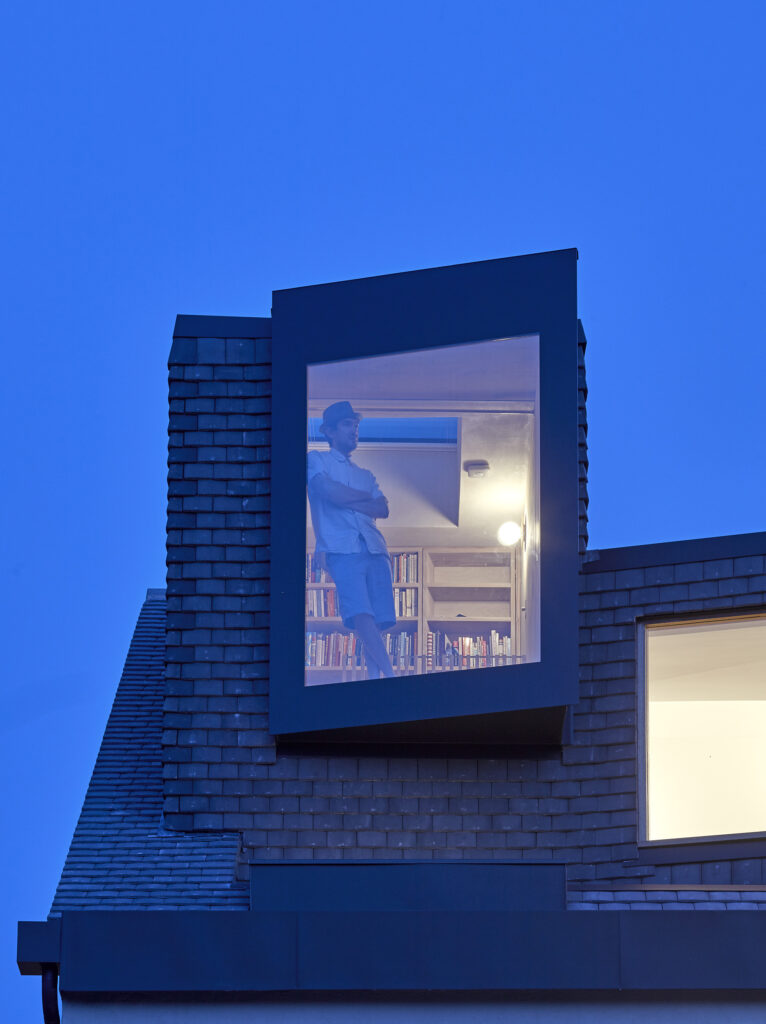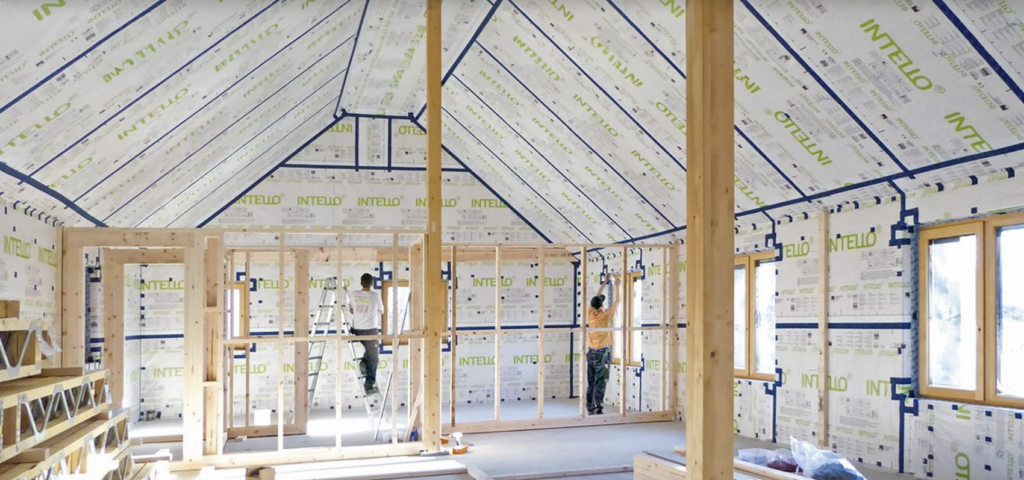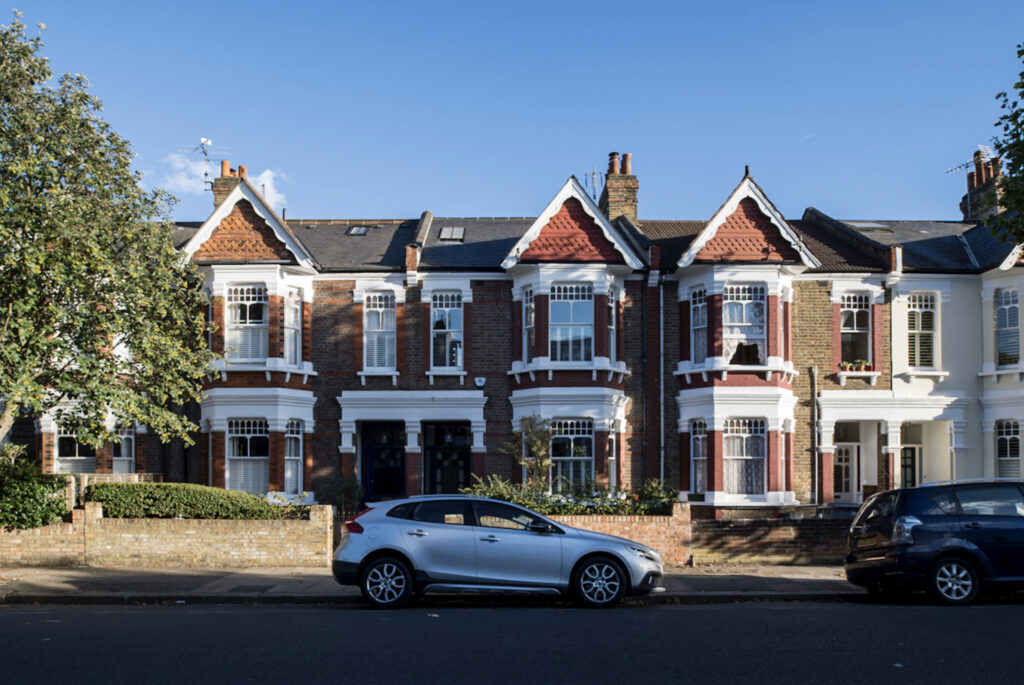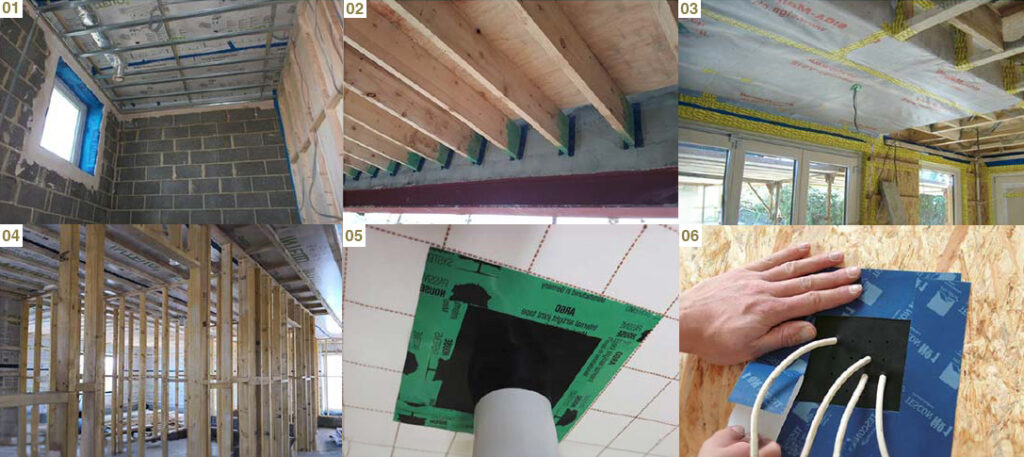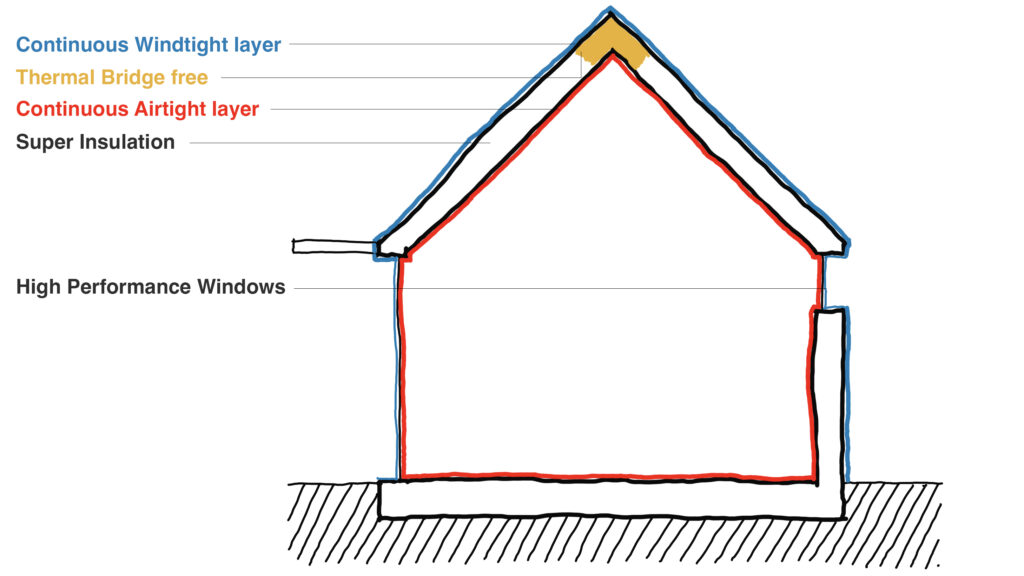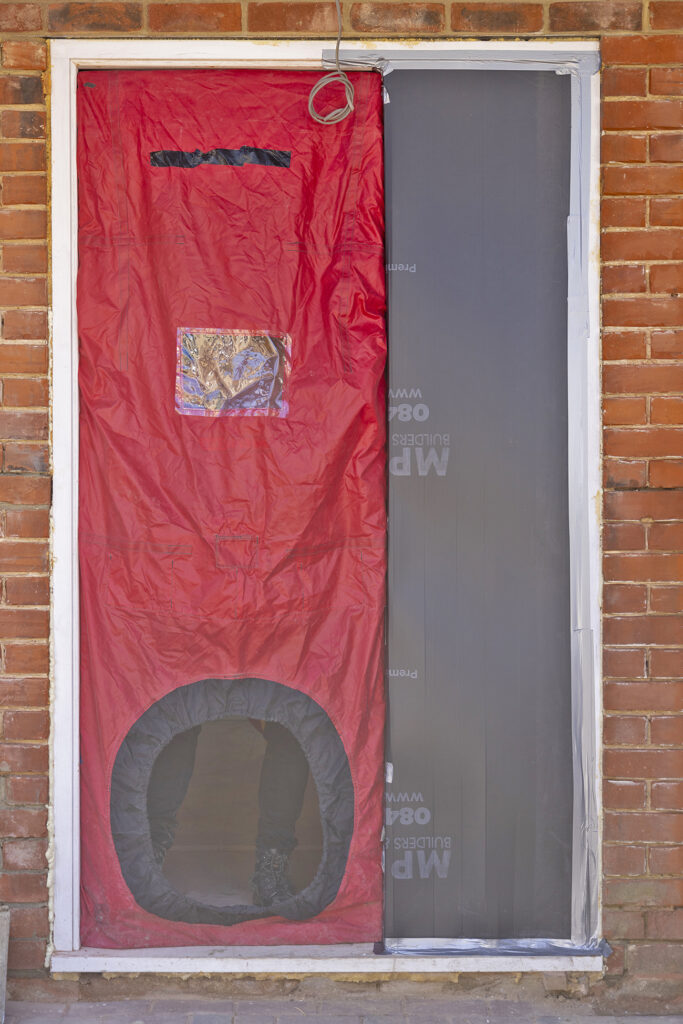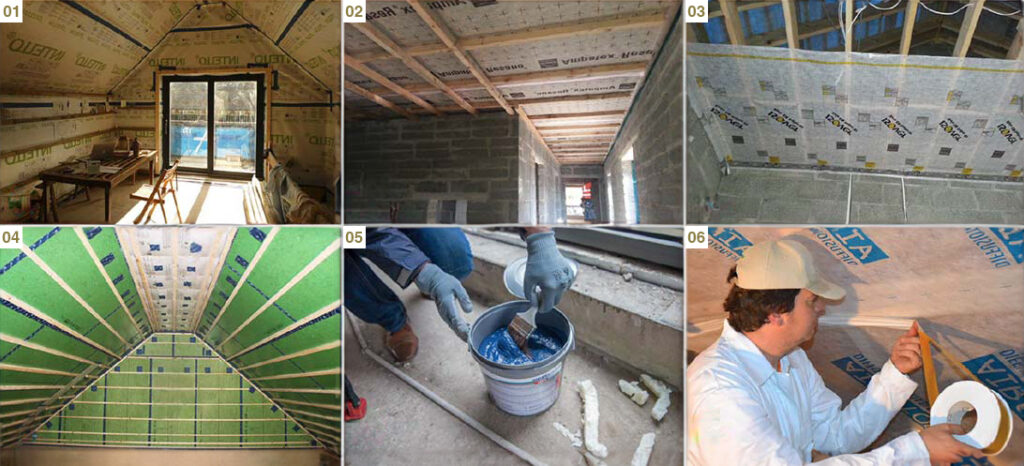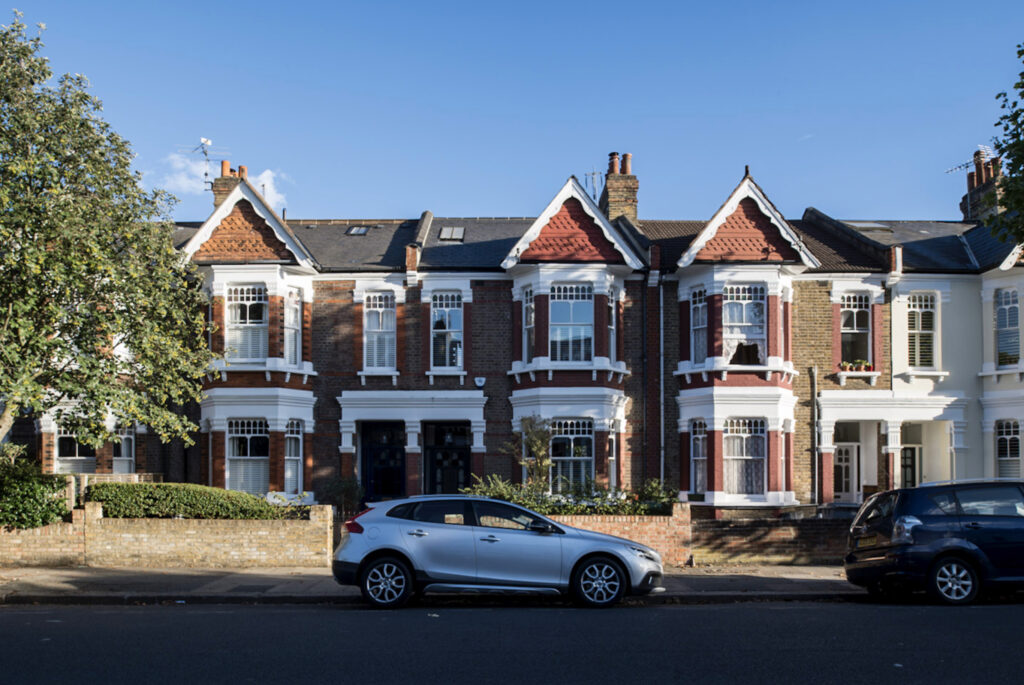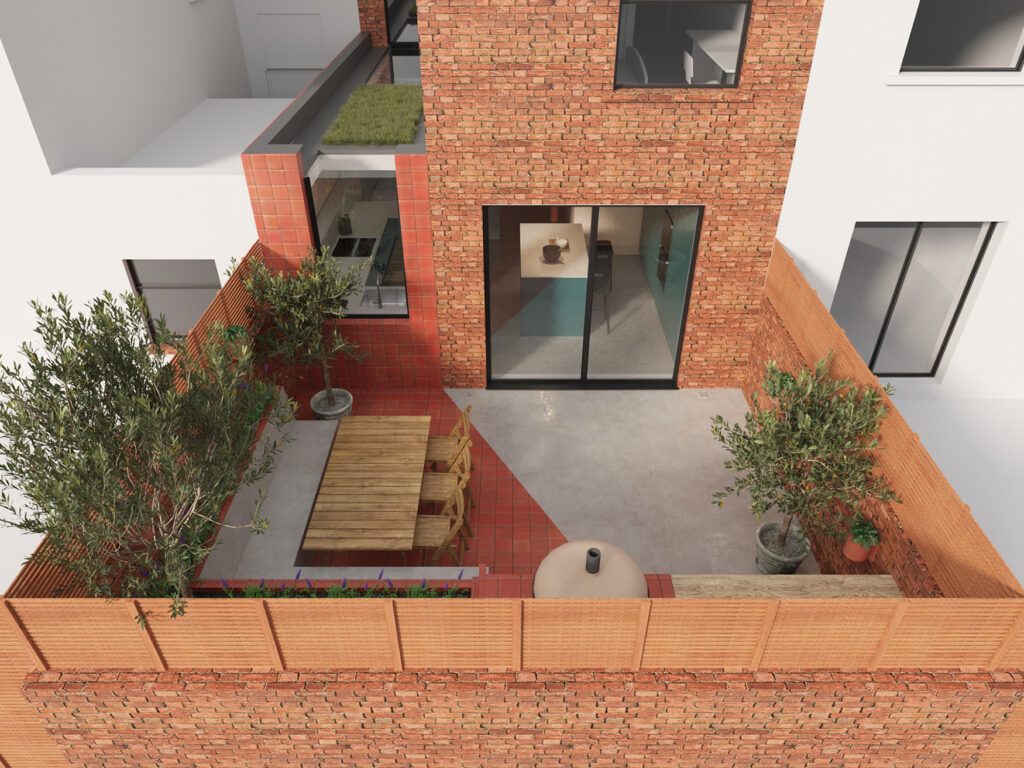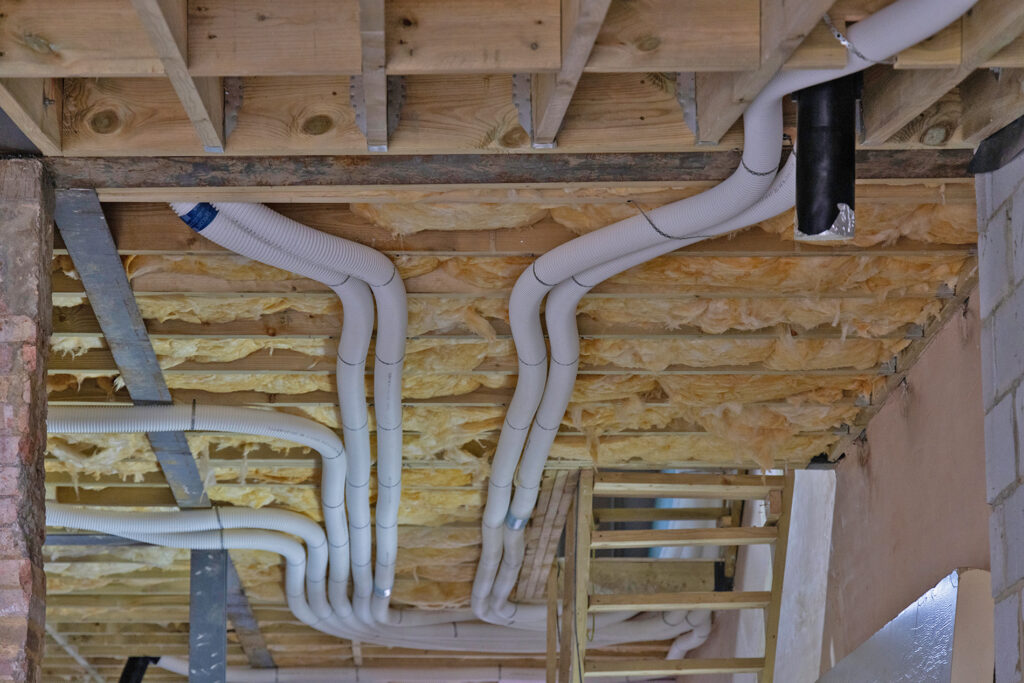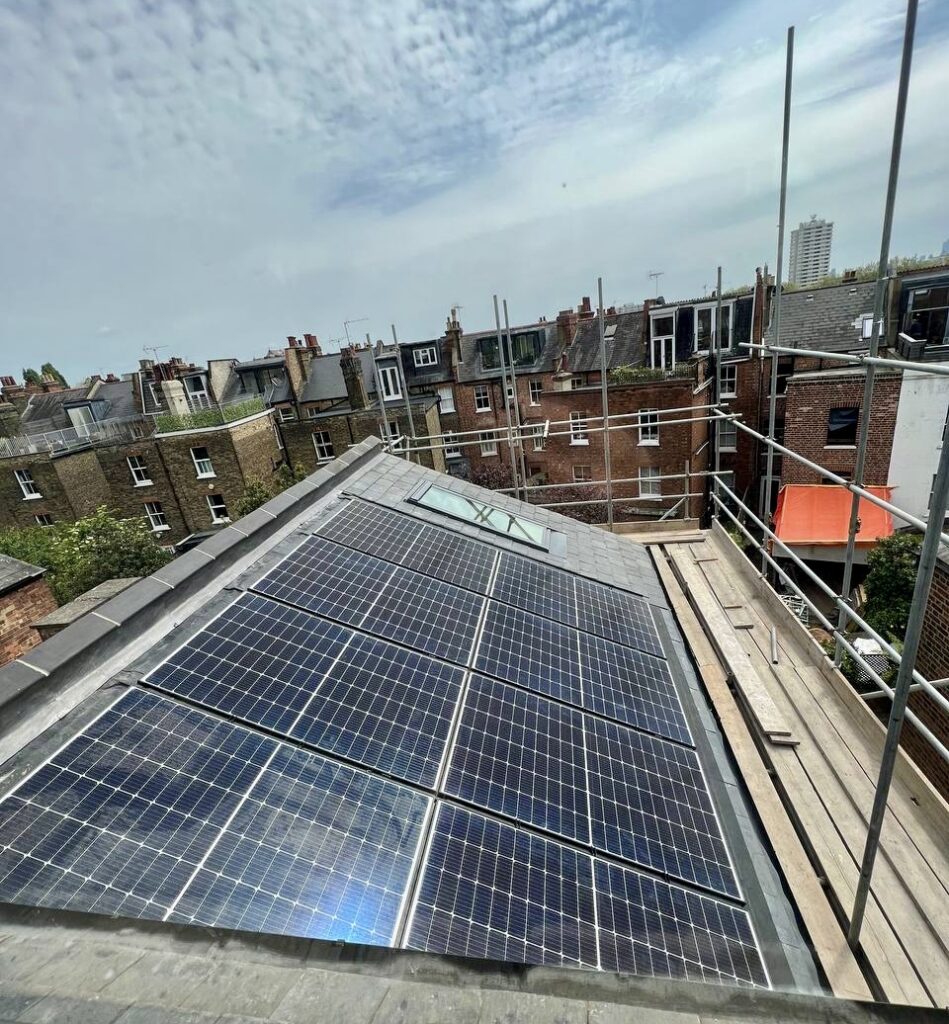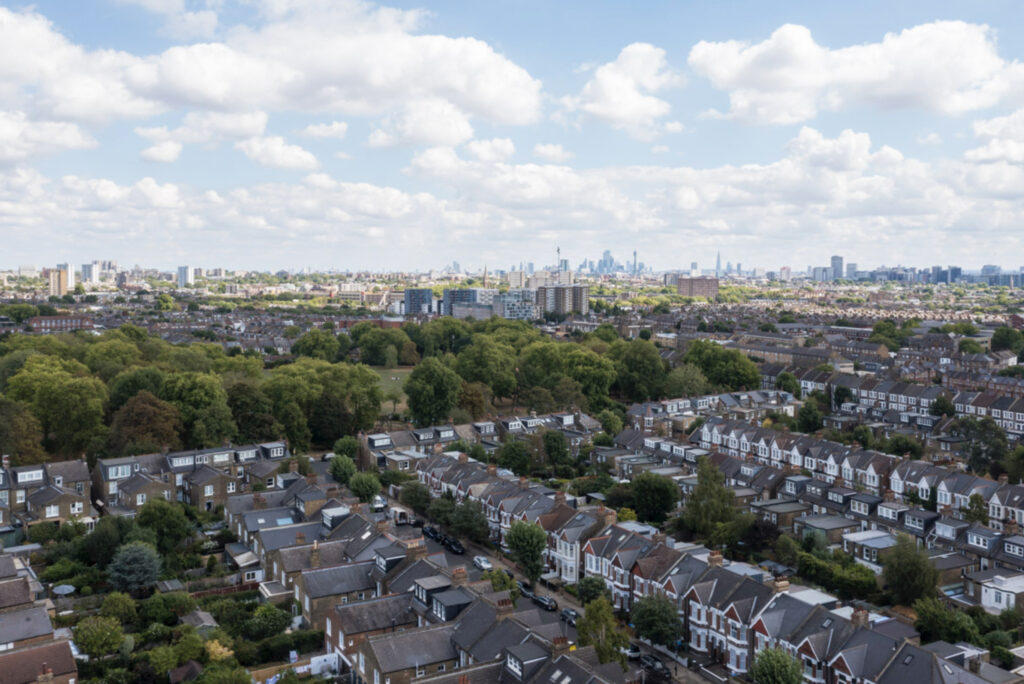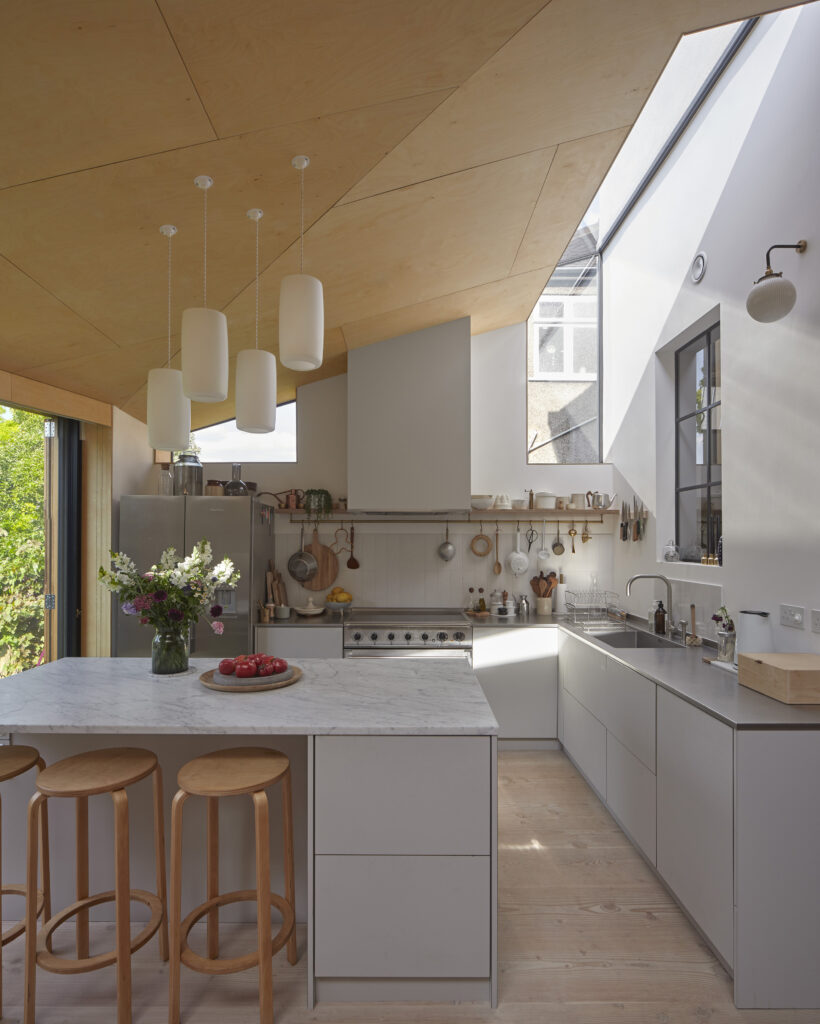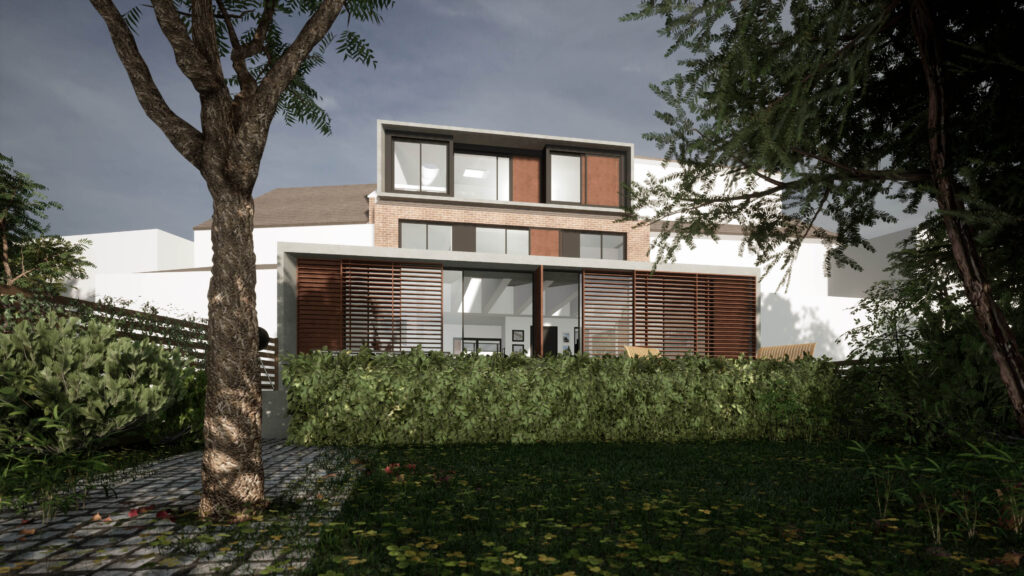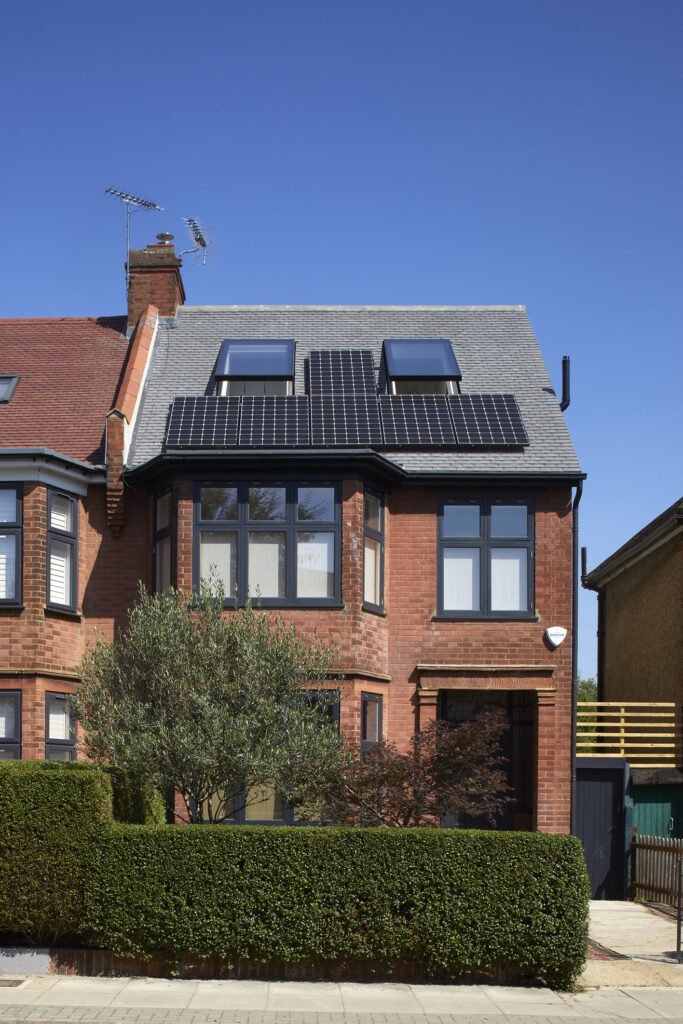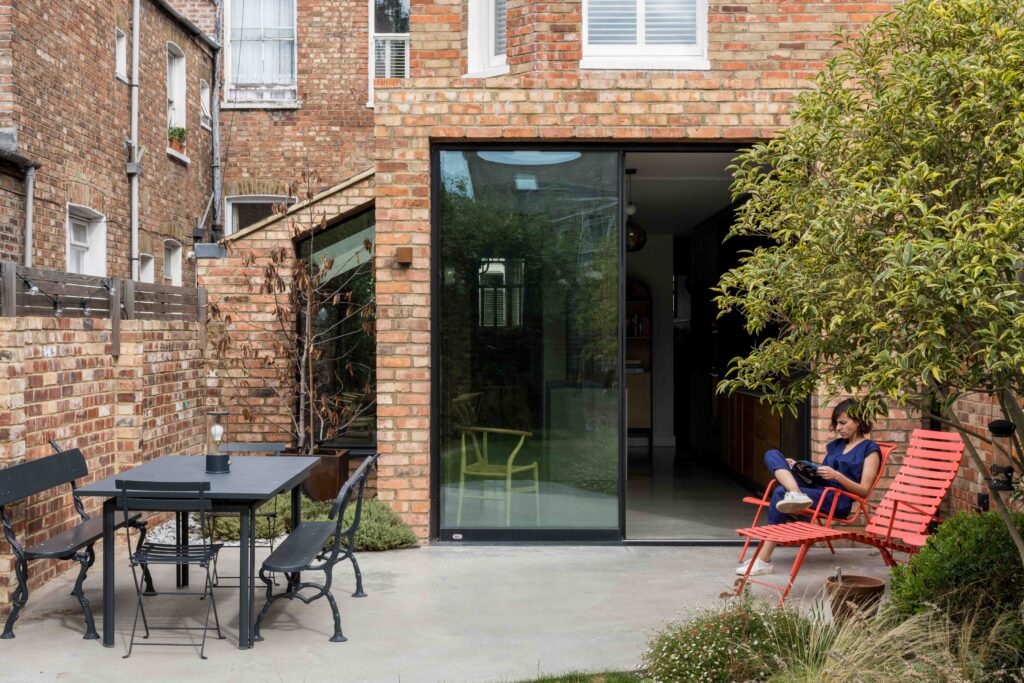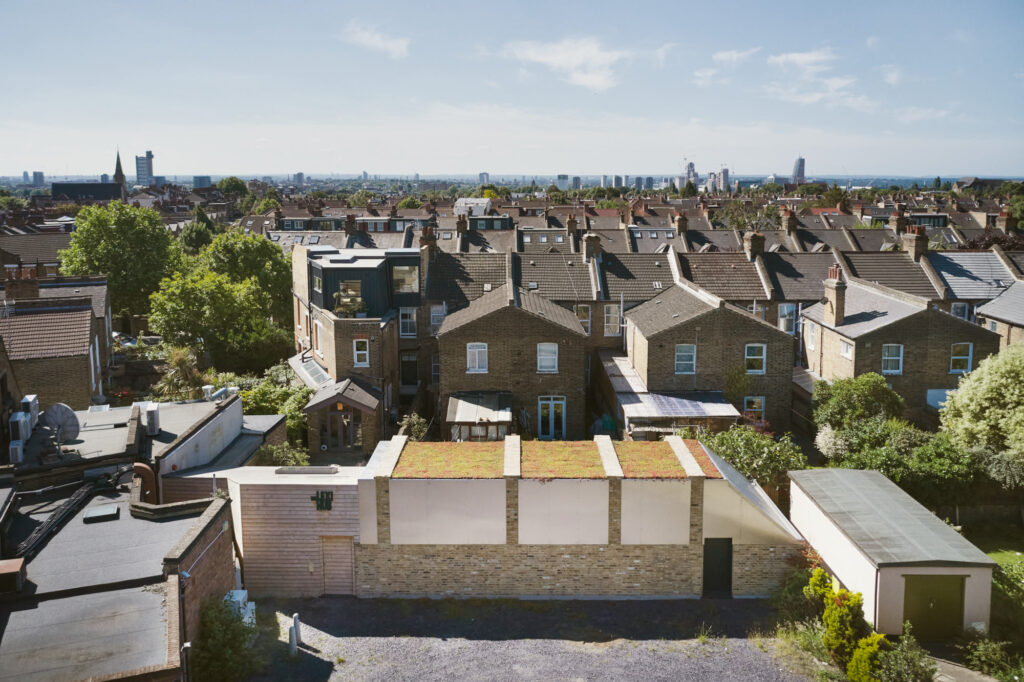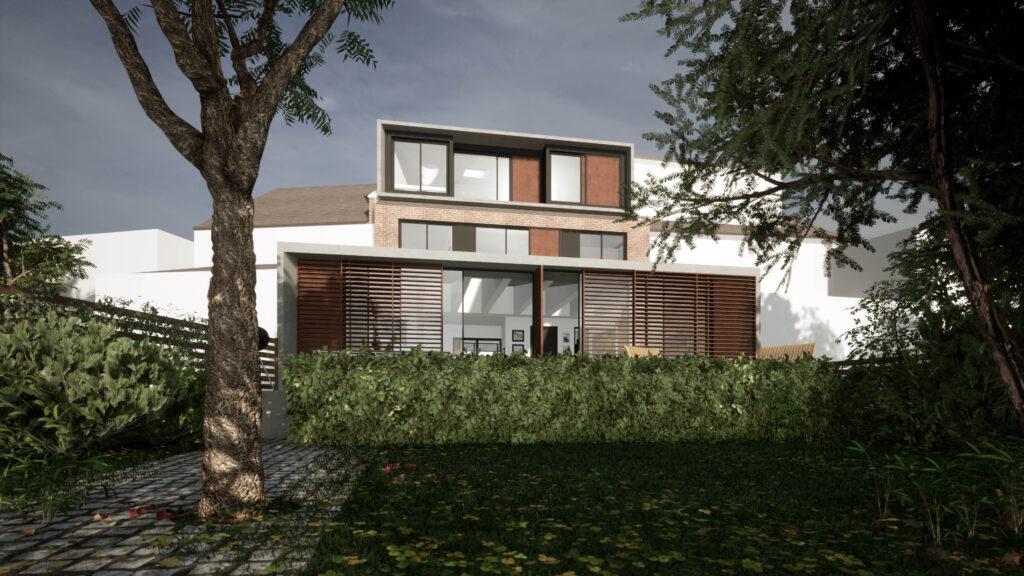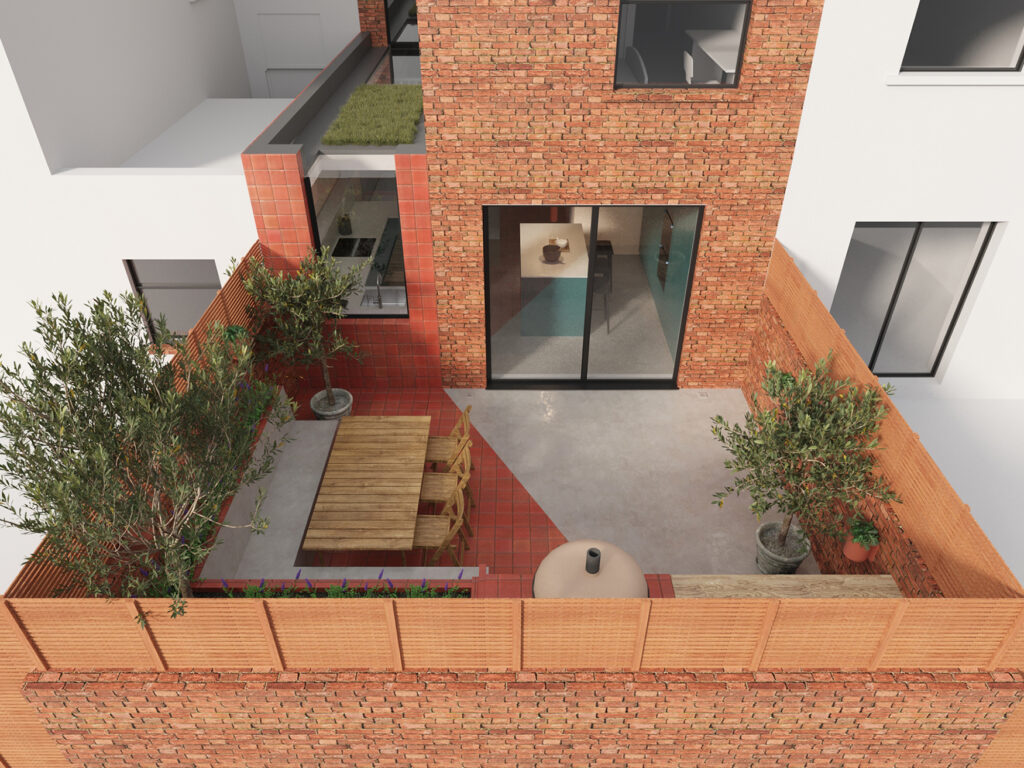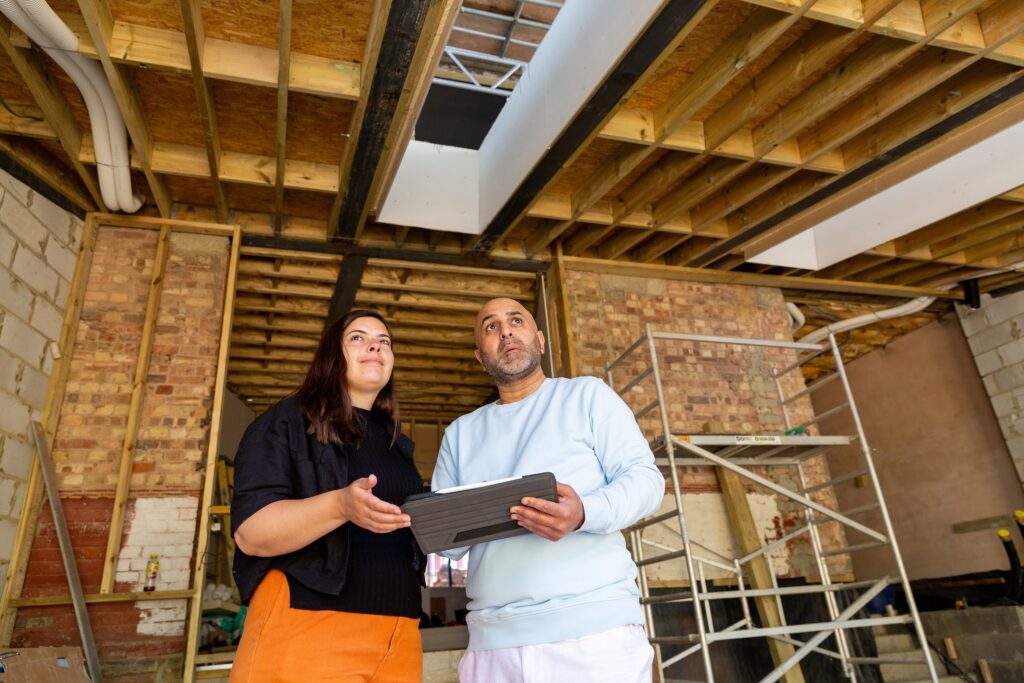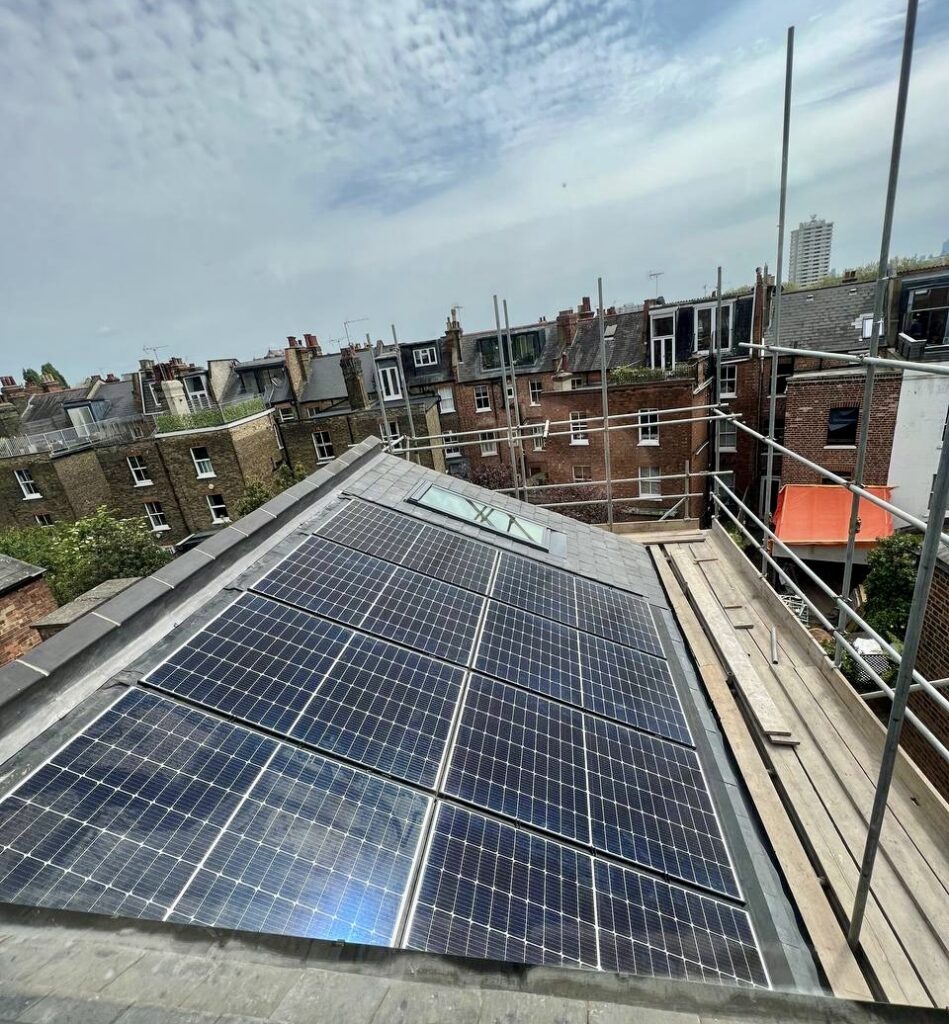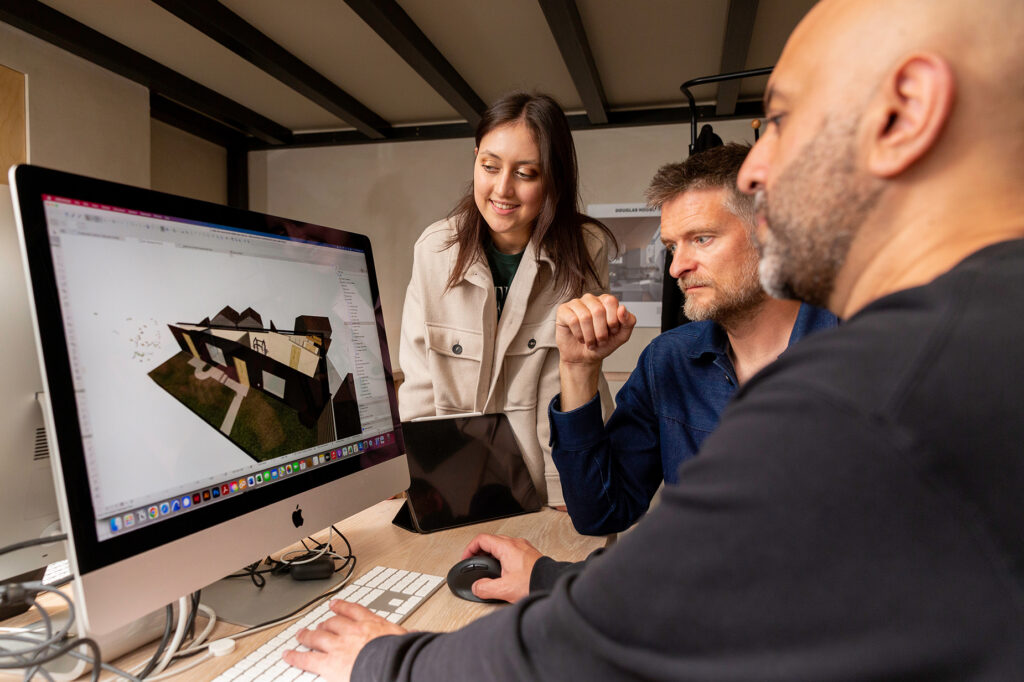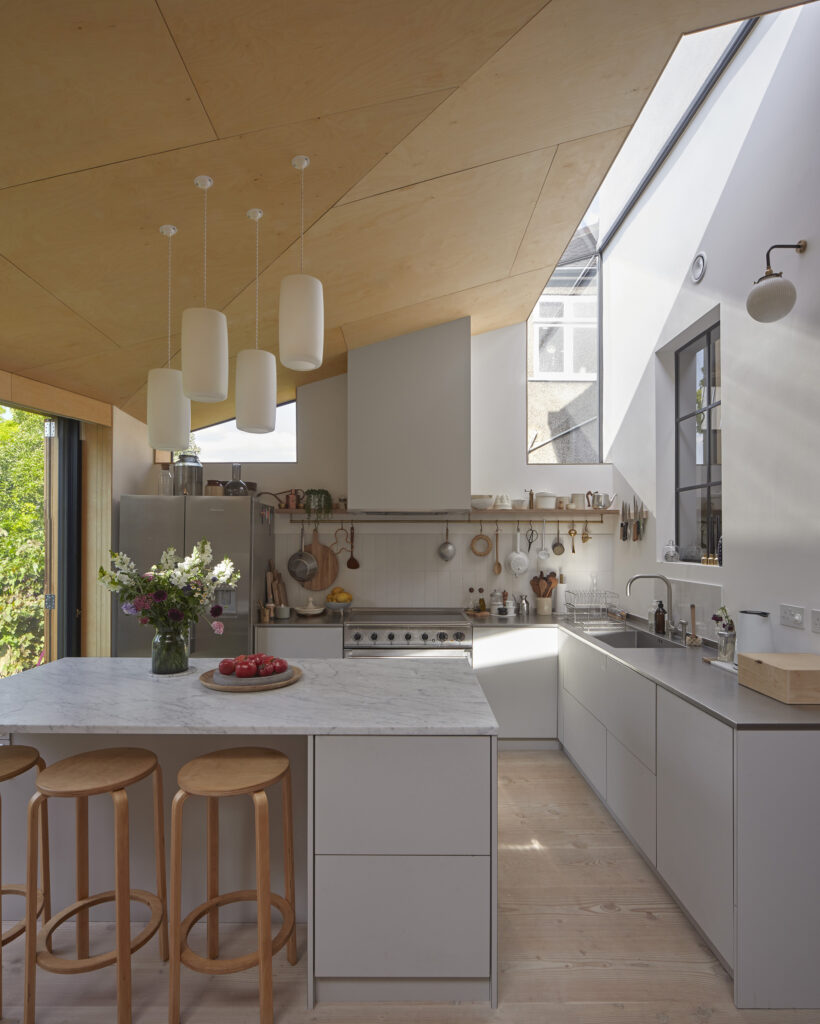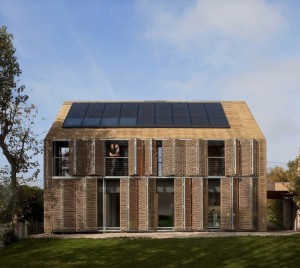At RISE Design Studio, we’ve always championed a sustainable approach, especially in recent years when the climate crisis is more pressing than ever. As someone who’s seen the tide change and observed the inertia in adoption, let me take you through the essence of creating low-energy, low-embodied carbon designs.
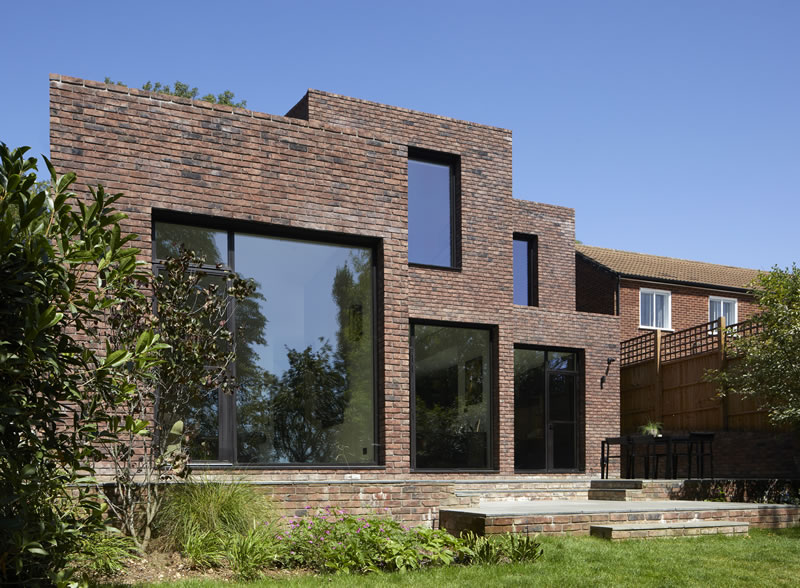
1. Understanding the Net Zero Context in Construction
In 2008, the UK emerged at the forefront of environmental consciousness by introducing the Climate Change Act, a legislation aimed at steering the nation towards a more sustainable future. The vision was clear: to achieve a substantial reduction in greenhouse gas emissions, targeting an ambitious 100% cut from the levels recorded in 1990 by the time we reach 2050. This commitment reflected not only a local desire for change but also resonated with international climate accords and set a benchmark for other nations to potentially emulate.
However, navigating the path to net zero proved far more intricate than setting a numerical target. Across industries, the challenge lay in deciphering how to transition from long-standing practices, deeply entrenched in the heart of our economy, to newer, greener alternatives. The construction industry, responsible for a significant portion of the UK’s carbon emissions, was no exception. While on paper the intentions seemed promising, the underlying complexity of this transition was evident in the nation’s real-time progress.
Fast-forward to 2019, and the urgency of the situation intensified. Despite a decade having passed since the initiation of the Climate Change Act, the UK Government found itself declaring an ‘environment and climate emergency’. While some sectors showed marked improvement, others lagged, making it evident that incremental changes were insufficient to meet the monumental task at hand.
This juxtaposition of intention and outcome brings us to a pivotal juncture in our sustainable journey. The question now looms large: have we been merely sustaining — continuing practices that, although perhaps slightly improved, are essentially a perpetuation of the status quo? Or are we genuinely evolving, pushing boundaries, innovating, and truly revolutionising the way we think about and practise construction?
Addressing this question necessitates a thorough introspection of the construction sector. Are the strategies adopted merely superficial measures designed to tick boxes and fulfil statutory requirements? Or do they signify a genuine commitment to change, marking the evolution of practices that integrate sustainability at their core?
Such introspection will be fundamental as we move forward. The world is ever-evolving, and the challenges we face in the next decade might be entirely different from those we grapple with today. Thus, understanding the broader context of ‘net zero’ in construction is not just about meeting targets set in the past, but about preparing for a future that demands sustainability as its foundation. We must build not just with today in mind but with an eye on tomorrow, ensuring that our strategies, practices, and ethos are adaptable, resilient, and truly sustainable.

2. Decoding Construction Emissions
The construction sector has always been a cornerstone of urbanisation and infrastructure development. As our cities expand and our infrastructure needs grow, so does the role of construction in shaping our environment. But with great responsibility comes the imperative to be accountable, and the statistics paint a startling picture of the sector’s impact on the environment.
2.1 The Carbon Footprint
With 45% of the UK’s carbon emissions attributed to the construction, operation, and maintenance of buildings, it’s evident that this sector is one of the primary contributors to the nation’s greenhouse gas outputs. These emissions can be traced back to various stages of a building’s lifecycle:
- Materials Production: The extraction, processing, and transportation of building materials are energy-intensive processes. Concrete, for instance, is one of the most widely used construction materials, and its production is responsible for a significant portion of these emissions.
- Construction Process: The activities on construction sites, from machinery operation to waste generation, contribute to the sector’s carbon footprint. Energy consumption in these phases, especially if sourced from non-renewable resources, further aggravates the emission issue.
- Building Operation: Once constructed, buildings continuously consume energy, primarily for heating, cooling, and lighting. If this energy is drawn from fossil fuels, it significantly adds to the carbon load.
- Maintenance & Refurbishment: Regular maintenance activities, especially those requiring extensive material inputs or energy consumption, play a part in the ongoing emissions from the built environment.
2.2 The Waste Dilemma
Waste generation is another critical area of concern. A striking 32% of landfill waste in the UK originates from construction and demolition activities. This not only represents a tremendous waste of resources but also has environmental implications. Landfills can lead to groundwater contamination, produce methane (a potent greenhouse gas), and destroy natural habitats.
Additionally, the fact that 13% of products procured for construction purposes are never used underscores a deeply entrenched inefficiency in the sector. This wastage speaks volumes about the need for better planning, forecasting, and sustainable procurement practices.
2.3 Paving the Way Forward
To effect genuine change, the construction sector must delve deeper than surface-level solutions. A systemic transformation is required, starting from the design phase right through to construction, operation, and eventual decommissioning.
- Sustainable Design: Architectural and engineering designs should prioritise sustainability. This might involve the use of environmentally friendly materials, passive solar design, and energy-efficient technologies.
- Resource Efficiency: By re-evaluating procurement strategies, using materials judiciously, and adopting recycling practices, the construction sector can drastically reduce waste and increase efficiency.
- Transition to Clean Energy: Embracing renewable energy sources for construction operations and building functionalities can substantially mitigate carbon emissions.
In essence, the construction sector’s road to sustainability demands more than cursory changes. It’s about overhauling traditional practices, adopting innovative solutions, and committing to a vision where the built environment harmoniously coexists with the natural world.

3. Addressing Embodied Carbon: The Real Devil in the Details
When one speaks of carbon emissions in construction, the focus predominantly hovers over operational energy – the energy consumed during the usage phase of a building. However, a deeper dig reveals a far more insidious element: embodied carbon. This form of carbon refers to the greenhouse gas emissions produced during the entire life cycle of building materials, right from extraction to end-of-life. It’s the devil in the details, lurking beneath our commonly held perceptions of construction’s environmental impact.
3.1 Defining Embodied Carbon
Embodied carbon can be split into two primary categories:
- Upfront Embodied Carbon: This encompasses emissions from the extraction, processing, manufacture, and transportation of materials used in construction. These emissions occur before the building even comes into existence.
- End-of-life Embodied Carbon: Emissions in this category arise from the repair, renovation, deconstruction, and disposal processes after the construction phase.
Both forms of embodied carbon are equally vital, and together they account for a significant proportion of a building’s total carbon footprint.
3.2 The Overshadowed Emissions
There are several reasons why embodied carbon is often overlooked:
- Eclipsed by Operational Carbon: The ongoing energy use in buildings, particularly in heating, cooling, and lighting, often overshadows embodied carbon because of its recurrent and visible nature.
- Complexity in Measurement: Calculating embodied carbon is challenging due to the varied lifecycle of materials, differences in transportation methods, and the myriad processes involved in material creation.
- Lack of Awareness: A comprehensive understanding of embodied carbon is still nascent in many industry circles. As a result, its importance is often diminished in mainstream discussions.
3.3 Unveiling the Hidden Impact
Several construction practices and phases contribute to the stealthy rise of embodied carbon:
- Material Choice: Materials like concrete and steel, while sturdy and reliable, come with a hefty carbon price tag due to their manufacturing processes.
- Transportation: Long supply chains and the heavy machinery involved in transporting materials amplify the carbon footprint.
- Construction Techniques: Traditional construction methods might not always be the most carbon-efficient.
- Maintenance and Refurbishment: The frequent replacement of components, the use of non-sustainable materials for repairs, and inefficient restoration methods add to the carbon load.
- Waste Management: Inadequate recycling and reuse practices during deconstruction can lead to unnecessary emissions during waste disposal.
3.4 Charting a New Course
Addressing embodied carbon necessitates a multi-pronged approach:
- Material Innovation: Research and development into low-carbon alternatives for traditional building materials can significantly reduce upfront emissions.
- Efficient Supply Chains: Streamlining transportation and sourcing materials locally can diminish the carbon emissions from logistics.
- Lifecycle Thinking: Architects, engineers, and builders need to adopt a lifecycle perspective, considering the environmental impact of materials from cradle to grave.
- Education and Advocacy: Spreading awareness about embodied carbon and its implications is crucial. Only with widespread knowledge can industry-wide changes be effected.
In summary, while operational energy remains a critical area of focus, a holistic approach that also accounts for embodied carbon is indispensable. Recognising and addressing this hidden devil in the details is imperative for a truly sustainable construction sector.
4. Redefining Materials: Beyond Steel and Concrete
The skyline of our modern cities, with its towering skyscrapers and sprawling infrastructure, tells a tale of steel and concrete, two materials that have become synonymous with construction. Their strength, durability, and versatility have made them the default choice for most construction projects. Yet, as we delve deeper into the 21st century, we are confronted with the undeniable environmental costs these materials incur. But with companies like Solidia transforming the very essence of such materials, and with the burgeoning rise of alternative construction resources, we might be on the cusp of a materials revolution.
4.1 The Environmental Weight of Steel and Concrete
Steel and concrete, while architecturally transformative, have environmental repercussions:
- Carbon-Intensive Production: The production of steel requires the smelting of iron at high temperatures, usually achieved through coal, releasing a significant amount of CO2. Similarly, the production of cement, a key component of concrete, is responsible for approximately 8% of global carbon dioxide emissions.
- Resource Depletion: Large quantities of raw materials, such as iron ore for steel and limestone for cement, are extracted, which impacts ecosystems and depletes finite resources.
- Waste Production: The production processes, particularly for steel, result in by-products and waste, which can be challenging to manage.
4.2 Pioneering Change: The Solidia Example
Solidia’s approach exemplifies how innovation can alter the landscape of traditional materials. By changing the chemical process in cement production, Solidia not only reduces CO2 emissions but also uses CO2 in the curing process of concrete. Such advancements showcase the potential for revamping old practices for a greener future.
4.3 Beyond the Familiar: Exploring Alternative Materials
While innovations in concrete and steel are welcome, diversifying our materials palette is crucial:
- Timber: Modern engineered timber products, like cross-laminated timber (CLT), offer strength comparable to traditional materials but with a fraction of the carbon footprint. Trees, as they grow, sequester carbon, making timber a carbon-negative material.
- Bamboo: Rapidly renewable and incredibly sturdy, bamboo can be a sustainable alternative for various construction needs, especially in regions where it naturally grows.
- Hempcrete: Made from the hemp plant’s woody core and a lime-based binder, hempcrete is a lightweight, insulating, and carbon-sequestering material.
- Mycelium: This fungal material is organic, fully compostable, and can be grown into various moulds, making it a potential insulator or structural element.
- Recycled and Reclaimed Materials: Utilising materials from demolished structures or repurposing waste products can drastically cut down on emissions from new material production.
4.4 The Road Ahead: Integration and Acceptance
The future of construction doesn’t necessarily lie in abandoning steel and concrete altogether but in integrating them with a broader set of sustainable materials. Challenges remain:
- Regulations and Standards: New materials need to meet safety and performance standards, requiring rigorous testing and approvals.
- Industry Mindset: Long-held beliefs and practices need to be reconsidered, which requires education, training, and a willingness to innovate.
- Cost Implications: Some sustainable materials are currently more expensive than their traditional counterparts, making them less attractive for budget-tight projects.
- Supply Chain Development: New materials necessitate new supply chains, which can pose logistical challenges initially.
However, with the environmental imperative clearer than ever, the shift towards more sustainable materials is not just desirable but essential. As the construction industry redefines its relationship with materials, it takes a significant step towards a more sustainable, green, and innovative future.
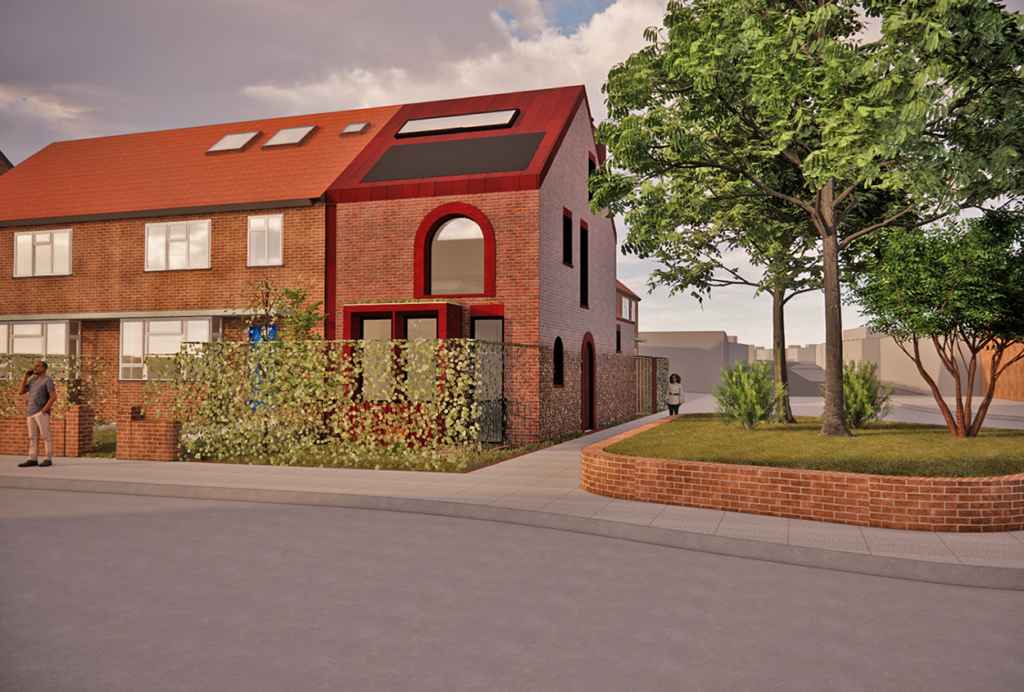
5. Embracing Timber: An Old Solution to a New Problem
Timber, once the primary material in many traditional construction practices, seemed to have been overshadowed by the rise of steel and concrete in modern times. However, as the quest for sustainable construction materials becomes imperative, timber is making a significant comeback. Central to this resurgence is Cross-Laminated Timber (CLT), a modern engineered wood product that is redefining the construction landscape. Pioneering firms such as RISE Design Studio and Waugh Thistleton are at the forefront of this timber revolution, exemplifying the perfect amalgamation of tradition, innovation, and sustainability.
5.1 The Science of Cross-Laminated Timber (CLT)
CLT is not just any regular wood. It’s a multi-layered wood panel made by stacking layers of lumber orthogonally and bonding them with structural adhesives. This unique structure provides CLT with:
- Strength: Comparable to traditional building materials, making it suitable for multi-storey structures.
- Fire Resistance: The dense, compact layers char slowly, providing a natural barrier to fire.
- Thermal Efficiency: Timber’s natural insulating properties make CLT structures energy-efficient.
5.2 The Environmental Advantage
Beyond its structural merits, CLT stands out for its sustainability:
- Carbon Sequestration: Trees absorb carbon dioxide as they grow. Even when transformed into CLT, the carbon remains locked in, making timber a carbon-negative material.
- Renewability: Forests, if managed responsibly, can provide a continual source of timber without depleting the Earth’s resources.
- Reduced Waste: CLT panels can be precision-cut off-site, leading to minimal waste during construction.
5.3 Projects in the Limelight: Dalston Works
The transformative power of timber becomes evident when one examines architectural marvels like Dalston Works:
- Dalston Works: Showcasing the versatility of timber, this project intertwines modern design with sustainable practices. Its distinctive appearance, combined with energy efficiency, makes it a beacon of future-forward architecture.
5.4 Timber’s Potential in Modern Architecture
The adaptability of timber is not just about its inherent properties but also about the innovative minds that mould it. Leading design studios are:
- Pushing Design Boundaries: Exploring intricate forms, curves, and overhangs previously thought challenging with timber.
- Integrating with Other Materials: Combining timber with glass, steel, or concrete to produce hybrids that maximise the strengths of each material.
- Exploring Prefabrication: Taking advantage of timber’s suitability for off-site construction to enhance efficiency and reduce construction times.
5.5 The Path Forward
While the merits of timber, particularly CLT, are compelling, it’s essential to approach timber construction with a balanced perspective. Responsible forestry, innovative design, and public perception are areas that require attention. With the right commitment, however, timber can indeed bridge the gap between our architectural ambitions and our environmental responsibilities.
In a world grappling with environmental challenges, timber’s re-emergence in the construction arena offers a glimmer of hope. By marrying the old and the new, it serves as a poignant reminder that sometimes, solutions to our most pressing issues can be found by looking back even as we march forward.
6. Debunking the Myths: Timber and Safety
The catastrophic events at Grenfell Tower undoubtedly cast a dark shadow over the use of certain materials in construction, leading to heightened concerns around fire safety. While the emphasis on safety is necessary and commendable, it’s vital to ensure that accurate information drives public perception and policy decisions. One such material under scrutiny is timber. However, it’s essential to separate fact from fiction, particularly when considering the benefits and risks associated with timber, especially Cross-Laminated Timber (CLT).
6.1 Timber: The Burning Myths
Combustibility: Timber is often viewed as a highly flammable material. While it’s true that timber can burn, its combustion properties, especially in thick sections like those in CLT, are predictable. When exposed to fire, timber forms a protective char layer that insulates the internal layers, slowing down the burning rate.
Fire Spread: Another misconception is that timber can cause rapid fire spread. In reality, CLT panels, due to their compactness, burn at a much slower rate than expected, often providing more resistance than some other conventional materials.
6.2 The Science Behind Timber Fire Safety
Several factors determine timber’s behaviour in fires:
- Density: Denser woods tend to have a slower charring rate, providing an added layer of protection.
- Moisture Content: Dry timber is more prone to ignition, but once a char layer forms, moisture content has less influence on the burning rate.
- Thickness: Thicker CLT panels take longer to burn through, offering extended protection in the event of a fire.
6.3 Sustainable Forestry: A Double Boon
Well-managed timber forests play a dual role:
- Endless Raw Material Supply: With sustainable forestry practices, we can ensure a continuous supply of timber without degrading our environment.
- Carbon Sequestration: As trees grow, they absorb carbon dioxide, making forests a vital carbon sink. By turning these trees into CLT panels, we lock in that carbon, further reducing our carbon footprint.
6.4 Regulatory Response: Ensuring Safety
While the inherent properties of timber offer fire resistance, it’s paramount that the regulatory environment also reflects best practices:
- Strict Building Codes: These should emphasise fire safety regardless of the construction material.
- Regular Inspections: Buildings made from timber should undergo frequent safety inspections to ensure they remain up to standard.
- Fire Safety Education: Educating both the construction industry and the public on the safe use of timber can alleviate unfounded fears.
6.5 Beyond Safety: The Holistic Benefits of Timber
While safety is paramount, it’s also essential to view timber in a broader context. Its sustainability, aesthetic appeal, and overall contribution to well-being make it a material that offers benefits well beyond just structural properties.
In conclusion, while the Grenfell tragedy rightly makes us question and re-evaluate our construction practices, it’s crucial that our responses are informed and balanced. Timber, especially in its engineered forms like CLT, presents an opportunity to build sustainably and safely. By debunking myths and investing in robust safety measures, we can ensure that timber continues to play a pivotal role in our built environment.
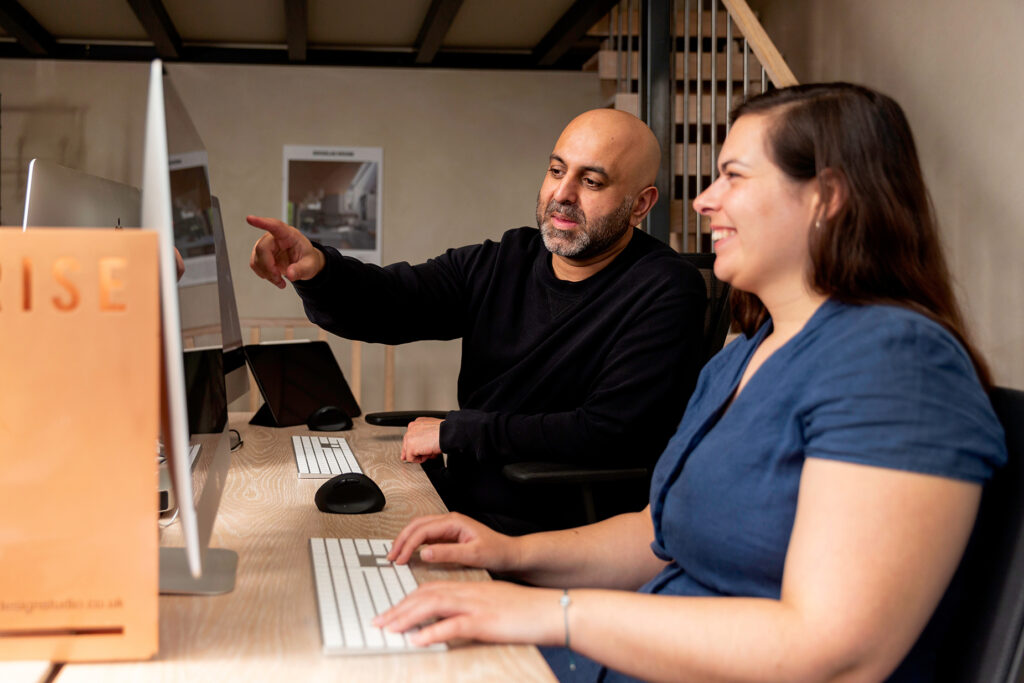
7. Beyond Conventional Wisdom: Challenging Green Standards
In recent times, the race towards a sustainable future has led to a surge of “green” labelled products and construction methodologies. While many of these standards have paved the way for increased environmental awareness, the challenge now lies in discerning between what is truly sustainable and what might merely be ‘greenwashed’ or superficially eco-friendly.
7.1 The Green Mirage: Unmasking Greenwashing
The term ‘greenwashing‘ describes the process by which organisations misleadingly promote their products, aims, or policies as environmentally friendly when, in reality, they might not be. In the realm of construction, this can manifest in several ways:
- Vague Claims: Terms like ‘eco-friendly’ or ‘all-natural’ without clear definitions or contexts can be misleading.
- Hidden Trade-offs: A product might be marketed as green based on a single environmentally friendly attribute, overshadowing other potentially harmful impacts.
- Lesser of Two Evils: Positioning a slightly ‘greener’ version of a notoriously unsustainable product as the ideal choice.
7.2 Evaluating the True Impact: Life Cycle Assessments
To genuinely gauge the sustainability of a material or method, it’s crucial to perform a Life Cycle Assessment (LCA). This comprehensive review examines the environmental impact of a product throughout its entire lifespan – from raw material extraction to disposal.
- Cradle-to-Grave: This approach examines the total environmental impact from material extraction to the end of the product’s life.
- Cradle-to-Gate: This evaluates the environmental implications from material extraction up to the point where the product leaves the production facility.
- Cradle-to-Cradle: This considers the entire product life cycle but with a focus on recycling or repurposing materials, rather than disposal.
7.3 Beyond Materials: Holistic Sustainable Practices
While the materials used play a significant role, true sustainability encompasses a broader approach:
- Design Philosophy: Architectural designs that incorporate passive solar heating, natural ventilation, and other green principles can significantly reduce a building’s environmental footprint.
- Operational Efficiency: The way buildings are utilised and maintained can dramatically impact their overall sustainability.
- Community Engagement: Local sourcing of materials and involving the community in construction projects can foster sustainable development and social responsibility.
7.4 Setting the Bar Higher: Next-Generation Green Standards
For the construction industry to evolve sustainably, it’s essential to challenge and refine the green standards regularly:
- Transparent Certifications: Clear criteria and rigorous third-party verifications for green labels can prevent misleading claims.
- Innovative Benchmarks: Encouraging the research and adoption of innovative solutions can pave the way for more robust green standards.
- Stakeholder Involvement: Engaging industry experts, environmentalists, and the public can ensure diverse perspectives shape sustainability standards.
7.5 Embracing Authentic Sustainability
The path to a genuinely sustainable future requires a shift in mindset. Rather than merely ticking boxes or achieving green labels, the construction industry should be guided by an inherent commitment to minimising environmental harm and enhancing societal well-being.
In conclusion, while current green standards have laid the essential groundwork, the next phase of sustainable construction must challenge, refine, and elevate these benchmarks. Only by aiming higher and demanding authentic sustainability can we hope to construct a future that’s not just built on solid foundations, but is also harmoniously intertwined with the environment.
8. The Dawn of Sustainable Materials and Technologies
In the past, the construction industry primarily revolved around traditional materials and methods, driven by tried-and-tested techniques. However, as environmental concerns have heightened, there’s been a transformative shift towards more sustainable options. Universities, startups, and leading businesses are pioneering new materials and technologies that not only challenge the status quo but promise a more sustainable future without compromising on performance.
8.1 Plant-Based Insulation: A Breath of Fresh Air
Washington State University has been at the forefront of developing plant-based insulation. Unlike conventional insulation, which often contains synthetic and potentially harmful components, plant-based alternatives offer:
- Reduced Carbon Footprint: Derived from renewable resources, the production of plant-based insulation emits fewer greenhouse gases.
- Health Benefits: Natural materials reduce the risk of off-gassing, which is associated with various health concerns.
- Biodegradability: At the end of its life cycle, plant-based insulation can degrade naturally, avoiding the landfill challenges posed by synthetic counterparts.
8.2 BioMason: Building the Future, One Brick at a Time
BioMason’s groundbreaking approach involves “growing” bricks from organic material. This innovative method:
- Eliminates the Need for High-Temperature Kilns: Traditional brick-making is energy-intensive, often requiring vast amounts of fossil fuels.
- Reduces CO2 Emissions: BioMason’s process sequesters carbon dioxide, thus actively reducing the amount of CO2 in the atmosphere.
- Offers Design Versatility: As they are grown, these bricks can be customised for different textures, strengths, and sizes.
8.3 StoneCycling: Recycling for Robust Construction
StoneCycling has revolutionised brick manufacturing by using waste materials. Their method:
- Diverts Waste from Landfills: By upcycling waste, StoneCycling reduces the strain on landfills.
- Diverse Aesthetics: The use of various waste materials results in a unique array of colours and textures for each brick.
- Conserves Natural Resources: As the bricks are made from recycled materials, the need for virgin raw materials is drastically reduced.
8.4 The Larger Landscape: Beyond Bricks and Insulation
While the aforementioned technologies are noteworthy, the horizon of sustainable construction materials is vast:
- Hempcrete: Made from hemp, lime, and water, Hempcrete provides excellent insulation and is carbon-negative.
- Mycelium Composites: Fungi-based materials are not only sustainable but offer unique structural and insulation properties.
- 3D Printing: This technology allows for precise material use, reducing waste and allowing for the use of recycled or alternative materials in construction.
8.5 The Promise of Tomorrow
The innovations led by institutions like Washington State University and companies such as BioMason and StoneCycling are just the tip of the iceberg. With a growing emphasis on sustainable development, research and investments in this arena are set to soar.
In closing, the dawn of sustainable materials and technologies is not a distant dream but a burgeoning reality. As we continue to explore and embrace these alternatives, we’re not only crafting structures but also moulding a more sustainable, environmentally conscious future.

9. Shaping Tomorrow: Legislation or Nature’s Reckoning?
The push and pull between human-made rules and nature’s undeniable truths have long dictated the way we approach our environment. As the construction industry stands at the crossroads of modernity and sustainability, the driving factors for change have never been more apparent. The decision before us is clear: either adapt proactively through legislation or react defensively against the increasingly severe consequences of climate change.
9.1 The Power of Legislation
Governmental mandates can act as the very catalyst the industry needs to propel towards sustainable change.
- Setting Clear Standards: By establishing quantifiable benchmarks for sustainability, governments can ensure a baseline level of environmental responsibility.
- Incentivising Green Practices: Tax reliefs, grants, or reduced permit fees for sustainable construction can encourage developers to go green.
- Educating the Masses: State-funded programmes can raise awareness about the significance of sustainable construction and its long-term benefits.
9.2 The Wrath of Nature
Ignoring the environment’s cues is no longer an option. Nature’s reckoning is evident in the form of:
- Natural Disasters: Increasingly severe weather events, from floods to heatwaves, highlight the immediate need for resilient and sustainable architecture.
- Resource Depletion: The scarcity of traditional construction materials is pushing the industry to seek sustainable alternatives.
- Ecological Impact: Loss of biodiversity and degraded landscapes are sobering reminders of the toll our construction choices can have on local ecosystems.
9.3 Advocacy in Design
As architects, engineers, and builders, industry professionals are in a unique position to influence sustainable change.
- Innovative Blueprints: By prioritising sustainable materials and methods in designs, the industry can pave the way for a new construction era.
- Client Engagement: Engaging in open dialogues with clients about the benefits and necessity of green construction can make a substantial difference.
- Collaborative Efforts: Partnerships with environmental experts and conservationists can enhance the industry’s understanding and implementation of sustainable practices.
9.4 A Collective Vision
The journey to sustainability is not a solo endeavour but a collective vision. Every stakeholder, from the labourer on the ground to the investor in the boardroom, plays a pivotal role.
- Empowering Workers: Training programmes can equip construction workers with the knowledge and skills to implement sustainable practices effectively.
- Investment in Research: Financial backing for research into sustainable materials and construction techniques can unlock new possibilities.
- Community Involvement: Encouraging community input in construction projects can lead to more environmentally friendly and socially responsible outcomes.
9.5 The Path Forward
While both legislation and nature’s reckoning are formidable forces, the true power lies in our hands. Through conscious choices, unyielding commitment, and a shared vision, the construction industry can and must shape a sustainable tomorrow. The stakes are high, but so too are the rewards: a world where buildings not only serve their occupants but also honour the environment they inhabit.
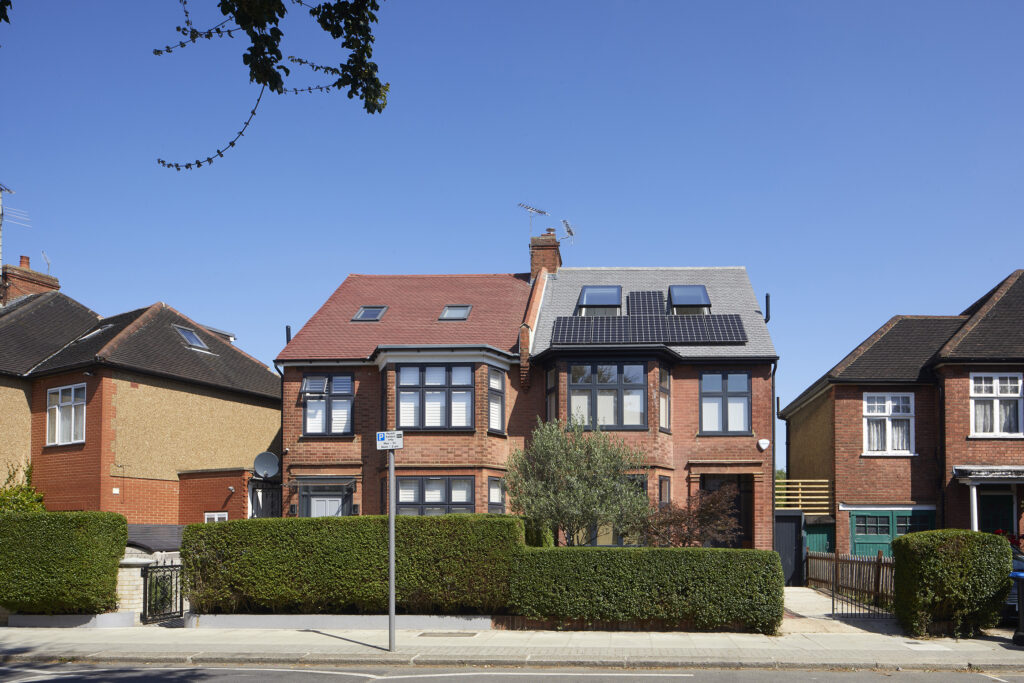
10. The Path Forward: From Within the Industry
In the throes of an environmental revolution, the construction sector stands at the vanguard of change. While external pressures, from legislation to market demand, play a role, it’s the industry insiders who hold the key to reshaping its future. For the architects, builders, and designers at the helm, leading the charge towards a net-zero future is not only a responsibility but a calling.
10.1 Embracing the In-House Vanguard
- Leading by Example: Key industry players should exemplify best practices, both in their designs and on-site operations.
- Continuous Education: Regular training and workshops can be conducted to update industry professionals on the latest sustainable methodologies and technologies.
- Empowering the Next Generation: Mentorship programmes and internships centred on green construction can foster an environment of growth and knowledge exchange.
10.2 Fostering Collaboration
- Open Dialogue: Platforms for discussion can be established, enabling professionals from different disciplines to share insights, troubleshoot issues, and brainstorm innovative solutions.
- Partnerships with Academia: Collaborative efforts with universities can lead to research-driven solutions, paving the way for groundbreaking sustainable techniques.
- Engagement with Suppliers: Close ties with material suppliers can foster the development of eco-friendly products tailored to the industry’s specific needs.
10.3 Financing the Green Revolution
- Green Investment: Industry leaders can push for more financial backing into sustainable construction projects, ensuring their viability and profitability.
- Grants and Incentives: Companies can establish grant systems for startups and projects that emphasise sustainability, creating a positive feedback loop of innovation.
- Cost-Benefit Analysis: By showcasing the long-term financial and environmental benefits of sustainable construction, the industry can encourage stakeholders to back such projects.
10.4 Nurturing Innovation
- R&D Focus: Companies can set aside dedicated funds and resources for research and development, promoting the creation of novel solutions.
- Rewarding Creativity: Internal competitions, awards, and recognitions can be established to motivate employees to think outside the box.
- Adopting Technology: Embracing technological advancements, such as Building Information Modelling (BIM) and green tech, can drive efficiency and sustainability.
10.5 The Ethos of Change
At the heart of this monumental shift lies a change in ethos. The construction industry needs to move away from the short-term, profit-driven mindset to one that values long-term sustainability and societal benefit. This ethos, while business-centric, should echo the broader societal push for environmental stewardship.
In Conclusion
Our commitment to a sustainable future in the construction sector is a marathon, not a sprint. It demands a holistic reimagining of processes, priorities, and perspectives. By forging ahead with resolve, unity, and vision, the industry can make the dream of a net-zero future an everyday reality. And in this collective endeavour, it’s not the distant policymakers or detached critics who will drive the change, but the passionate architects, builders, and designers at the very heart of the industry.
If you would like to talk through your project with the team, please do get in touch at mail@risedesignstudio.co.uk or give us a call on 020 3290 1003
RISE Design Studio Architects company reg no: 08129708 VAT no: GB158316403 © RISE Design Studio. Trading since 2011.

